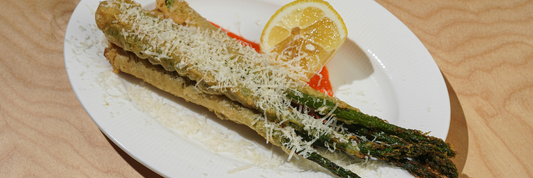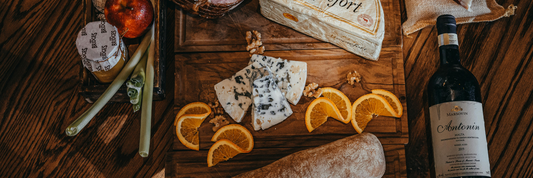A few years ago, the idea of enjoying restaurant-quality ramen at home might have felt unusual. Today, it’s the new norm. As delivery apps reshape the way people dine, ghost kitchens restaurants without storefronts are emerging as the fastest-growing trend in the food industry.
For ramen shops, this model is especially attractive. Ramen has strong demand, relatively low preparation cost, and huge potential for delivery sales. But here’s the challenge: ramen is not a simple dish to transport. It’s hot, soupy, and layered with delicate textures. Without the right packaging, what arrives at the customer’s door may be a soggy disappointment.
This is where Kimecopak steps in helping ghost kitchens solve packaging problems while maintaining professional quality and sustainable standards.
- Top Eco-Packaging Types Ideal for Ramen Delivery in 2025
- How to Keep Ramen Broth Hot During Delivery Without Spillage
- Why Packaging Impacts First Impressions in Sushi Takeouts
What Are Ghost Kitchens? And Why Ramen Fits Perfectly

Ghost kitchens are professional cooking facilities dedicated solely to fulfilling online orders. They cut costs by eliminating dine-in areas, focusing on speed, consistency, and delivery reach.
Ramen is a natural fit for this model. It’s popular among young urban consumers, Instagrammable, and adaptable to multiple menus. However, ramen brings unique challenges: noodles lose texture quickly, broth spills easily, and presentation can fall flat without careful packaging. For ghost kitchens with no physical dining space to impress customers, packaging is the first and only impression.
Packaging Challenges Faced by Ghost Kitchens

- Maintaining Temperature and Freshness
Ramen broth needs to stay steaming hot, while noodles should remain springy not overcooked. Packaging must balance insulation with ventilation. - Preventing Leakage and Spillage
Soup leakage during transport is one of the top reasons for customer complaints. A single spill can damage brand trust instantly. - Balancing Cost with Quality
Ghost kitchens operate on tight margins. Packaging that is too expensive eats into profits, but cheap packaging risks bad reviews. - Branding Without a Physical Storefront
With no dine-in experience, packaging becomes the brand’s touchpoint. A plain container can make the meal feel generic, while custom packaging builds loyalty. - Sustainability Pressures from Customers
Today’s consumers, especially millennials and Gen Z, care about eco-friendly practices. Packaging that feels “wasteful” can harm reputation.
Smart Packaging Solutions for Ramen Ghost Kitchens
- Double-Wall Bowls for Heat Retention: Keeps broth hot longer without burning customers’ hands.
- Soup-Separating Containers: Prevents noodles from getting soggy during delivery.
- Tamper-Evident & Leak-Proof Lids: Ensures safety, professionalism, and customer confidence.
- Compostable & Eco-Friendly Materials: Reduces environmental impact while meeting customer expectations.
- Custom Branding Options: Reinforces the ghost kitchen’s brand identity, turning delivery packaging into a marketing tool.
Practical Tips for Ghost Kitchens Choosing Packaging

Here’s a quick checklist ramen kitchens can use:
- Choose containers with heat retention + spill protection
- Separate noodles from broth when possible
- Select eco-friendly materials to meet customer expectations
- Invest in custom branding for long-term value
- Evaluate suppliers for reliability and cost efficiency
Conclusion
Ghost kitchens are more than a trend they represent the future of food delivery. For ramen brands, success won’t just depend on flavor, but also on how well the meal travels from kitchen to customer. Packaging isn’t just a box or bowl, it’s part of the dining experience.
By partnering with Kimecopak, ramen ghost kitchens gain access to packaging solutions that protect food quality, elevate brand image, and align with sustainable values.
Ready to upgrade your ramen delivery? Explore Kimecopak’s packaging today.
FAQ – People Also Ask
Q1: What is a ghost kitchen and how does it work?
A ghost kitchen is a delivery-only restaurant without a storefront. It prepares meals solely for online orders through apps like Uber Eats or DoorDash.
Q2: Why is packaging important for ramen delivery?
Packaging ensures ramen arrives hot, fresh, and spill-free. Without proper packaging, noodles may get soggy, broth may leak, and customers may leave negative reviews.
Q3: What packaging is best for ramen noodles?
The best packaging includes double-wall bowls for insulation, soup-separating containers, and leak-proof lids to maintain quality during delivery.
Q4: How can ghost kitchens use eco-friendly packaging without high costs?
By joining Kimecopak’s membership program, ghost kitchens can access affordable, sustainable packaging solutions at scale, balancing both budget and eco-responsibility.
-
LEARN MORE about How "Subscribe for a Happy Life" will benefits your business HERE!
-
LEARN MORE about Kim Vu, sharing on the challenges she faced as a former restaurant owner, and how she overcame them to create KimEcopak HERE!




